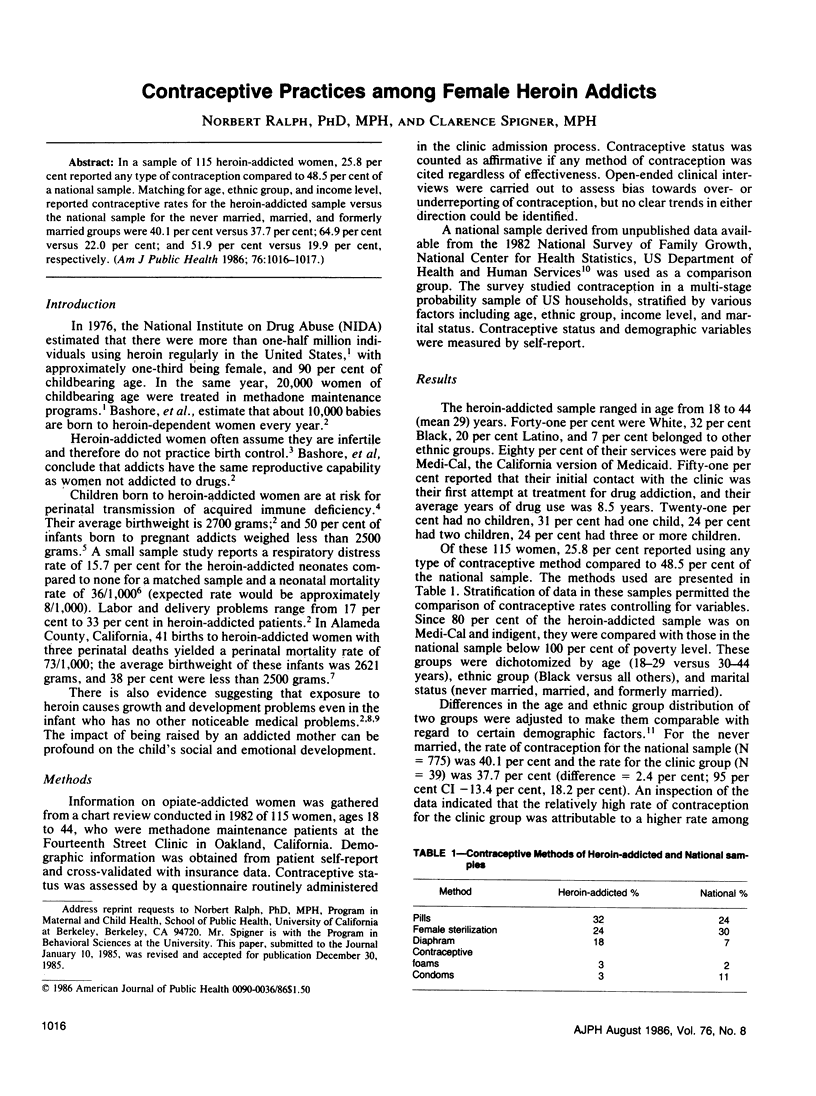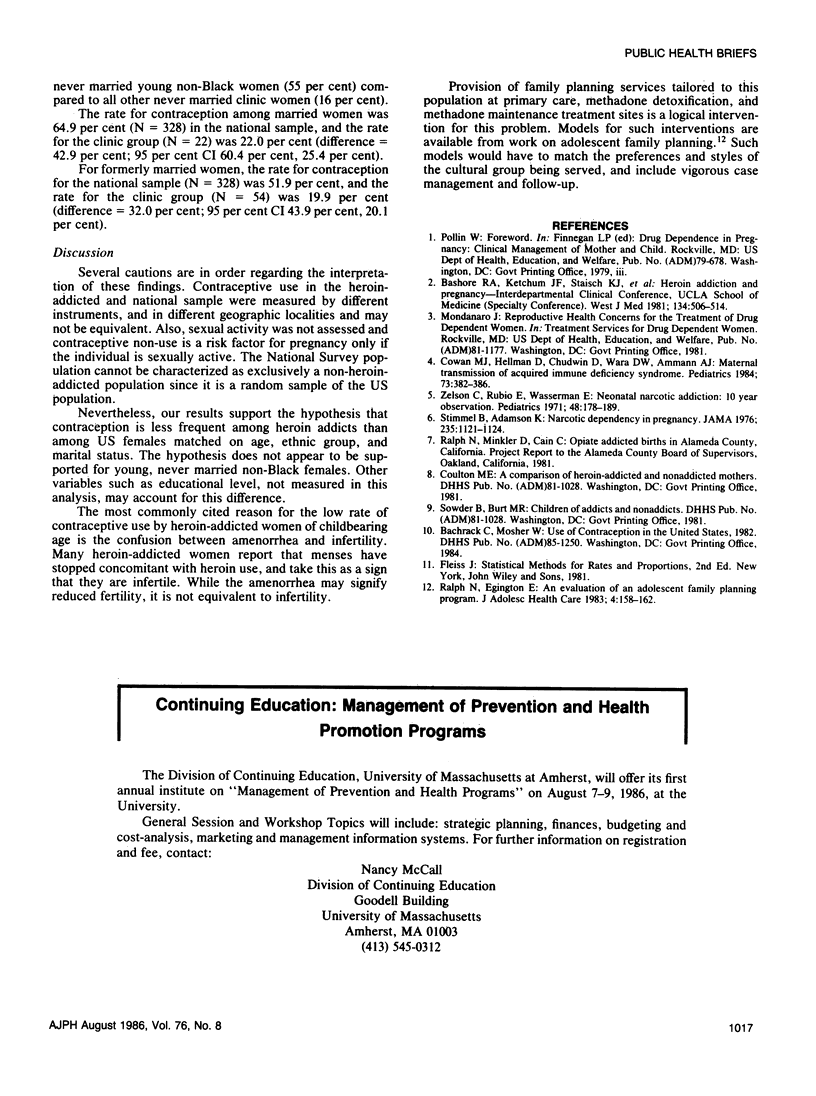Abstract
In a sample of 115 heroin-addicted women, 25.8 per cent reported any type of contraception compared to 48.5 per cent of a national sample. Matching for age, ethnic group, and income level, reported contraceptive rates for the heroin-addicted sample versus the national sample for the never married, married, and formerly married groups were 40.1 per cent versus 37.7 per cent; 64.9 per cent versus 22.0 per cent; and 51.9 per cent versus 19.9 per cent, respectively.
Full text
PDF

Selected References
These references are in PubMed. This may not be the complete list of references from this article.
- Bashore R. A., Ketchum J. S., Staisch K. J., Barrett C. T., Zimmermann E. G. Heroin addiction and pregnancy. West J Med. 1981 Jun;134(6):506–514. [PMC free article] [PubMed] [Google Scholar]
- Cowan M. J., Hellmann D., Chudwin D., Wara D. W., Chang R. S., Ammann A. J. Maternal transmission of acquired immune deficiency syndrome. Pediatrics. 1984 Mar;73(3):382–386. [PubMed] [Google Scholar]
- Ralph N., Edgington A. An evaluation of an adolescent family planning program. J Adolesc Health Care. 1983 Sep;4(3):158–162. doi: 10.1016/s0197-0070(83)80368-4. [DOI] [PubMed] [Google Scholar]
- Stimmel B., Adamsons K. Narcotic dependency in pregnancy. Methadone maintenance compared to use of street drugs. JAMA. 1976 Mar 15;235(11):1121–1124. doi: 10.1001/jama.235.11.1121. [DOI] [PubMed] [Google Scholar]
- Zelson C., Rubio E., Wasserman E. Neonatal narcotic addiction: 10 year observation. Pediatrics. 1971 Aug;48(2):178–189. [PubMed] [Google Scholar]


